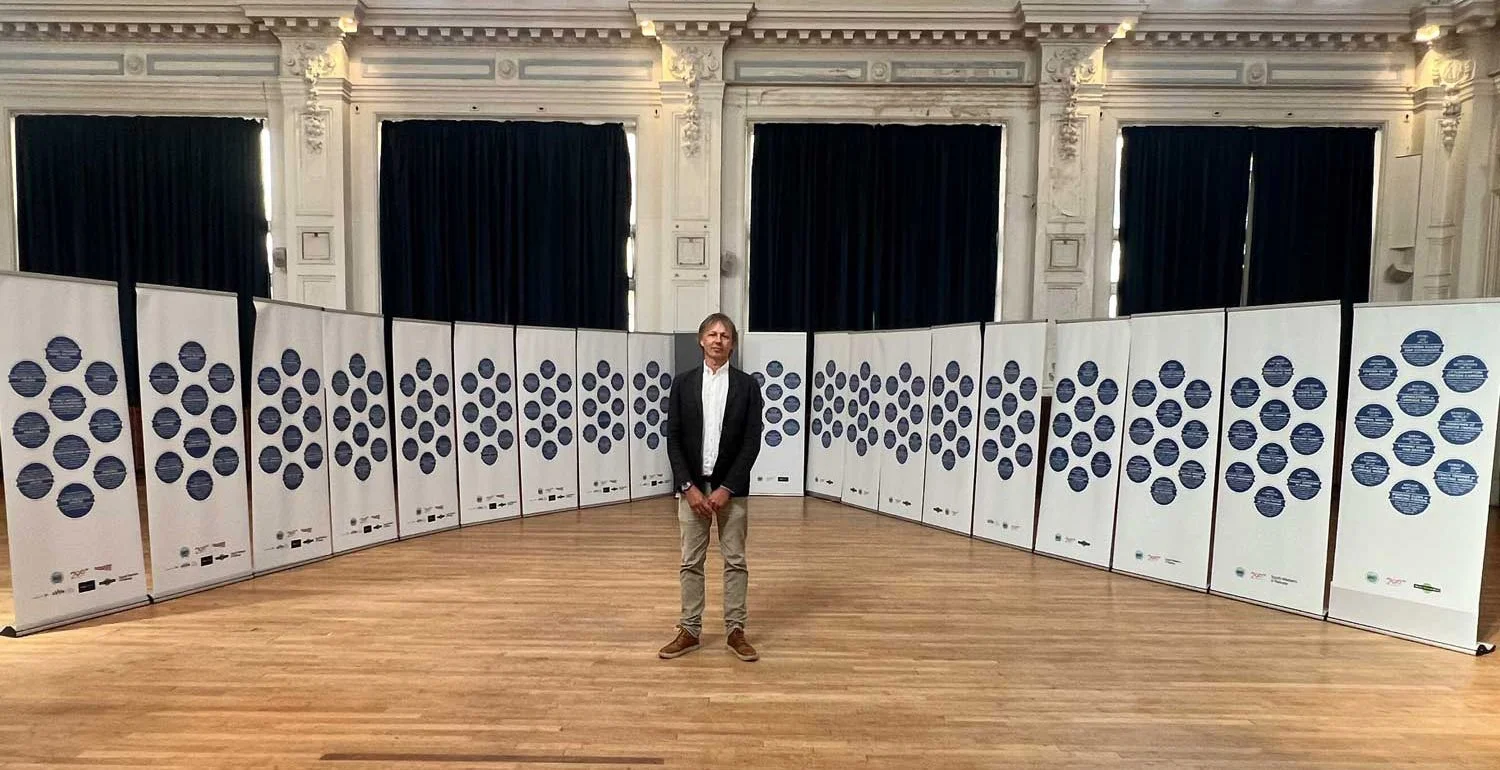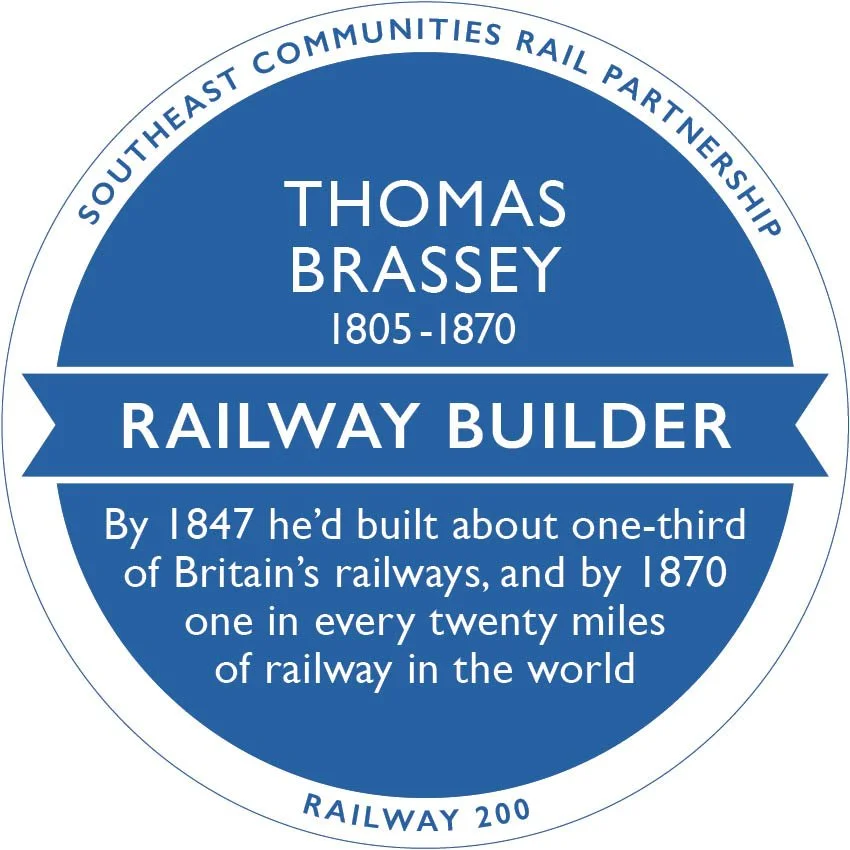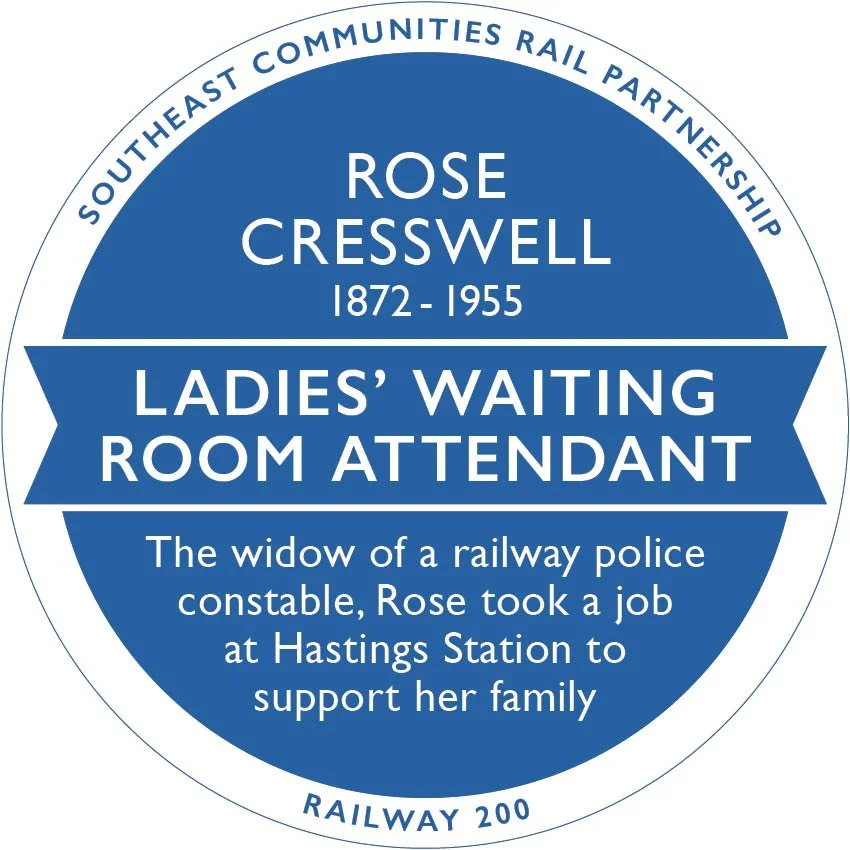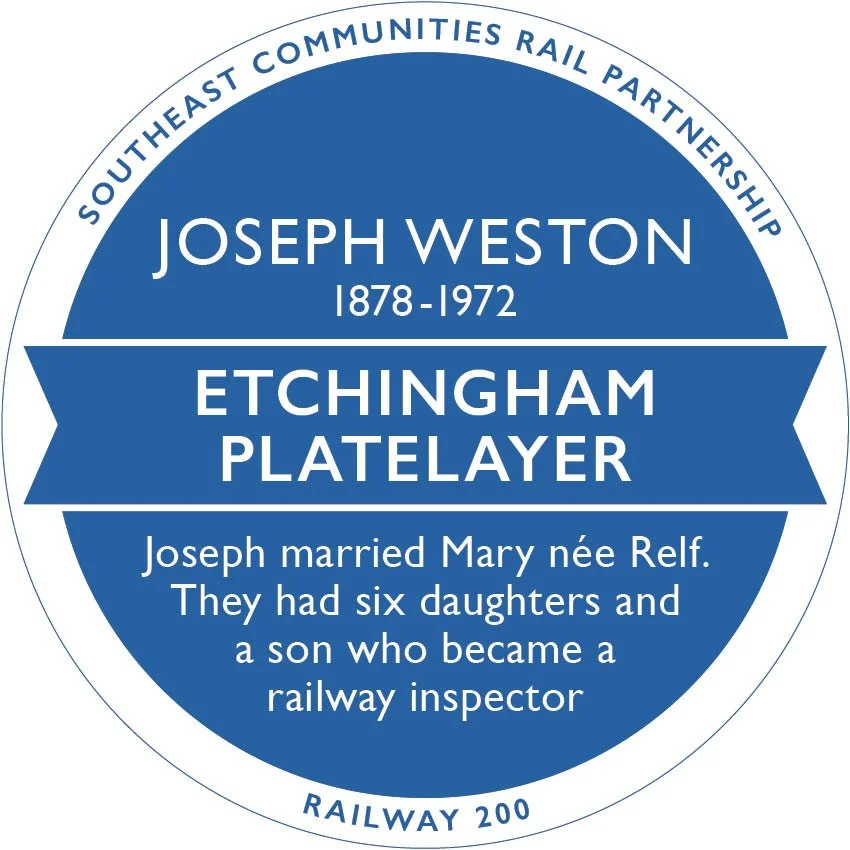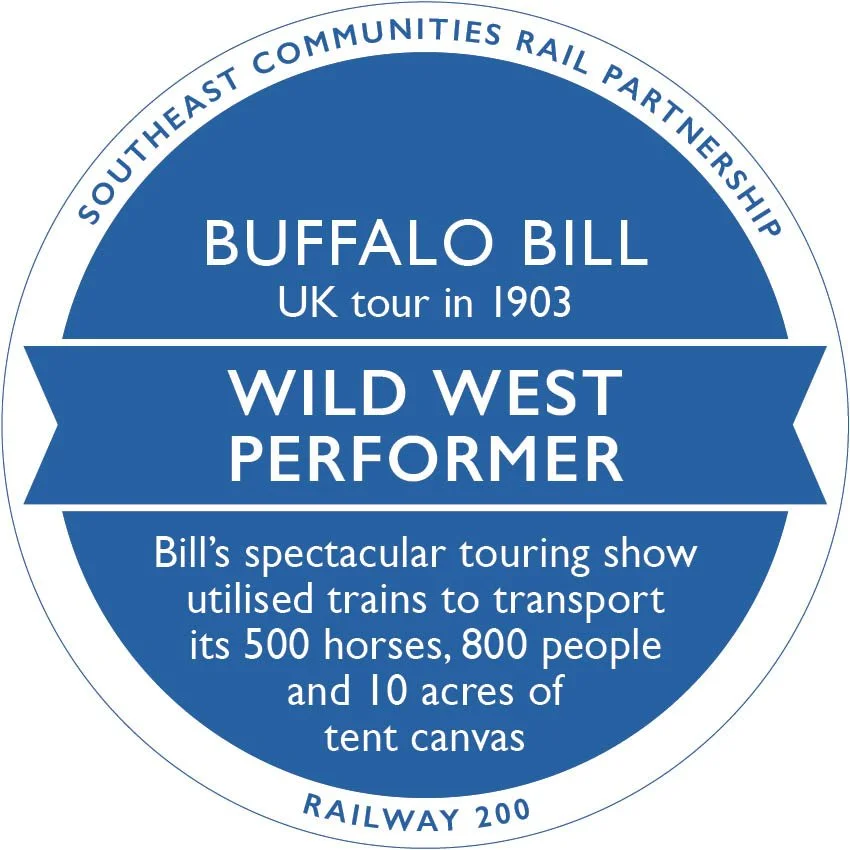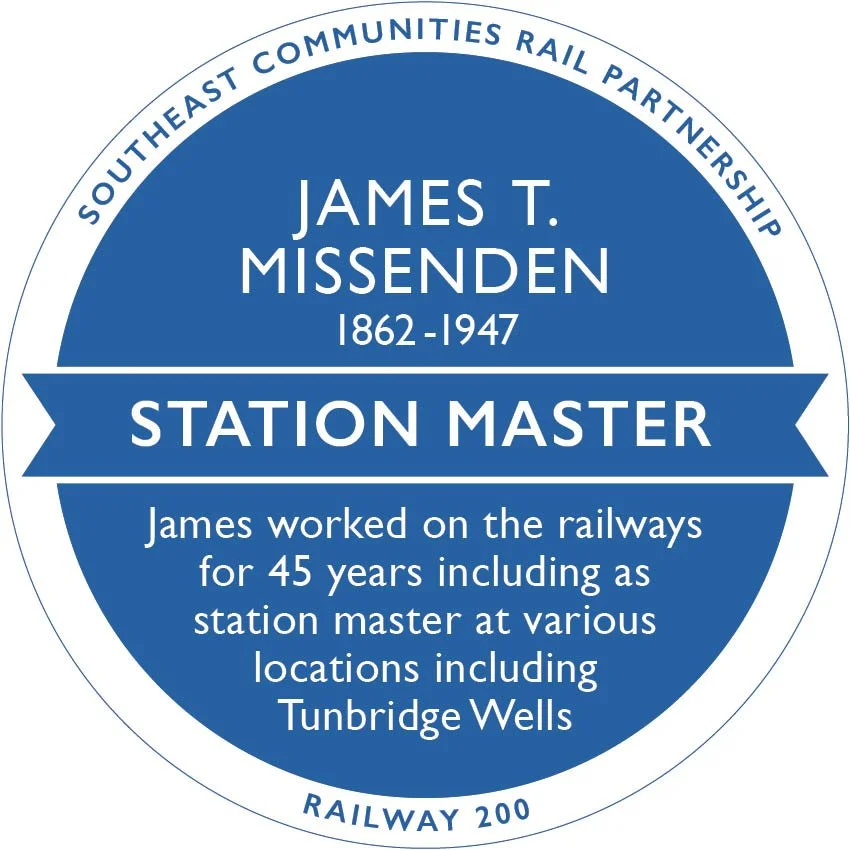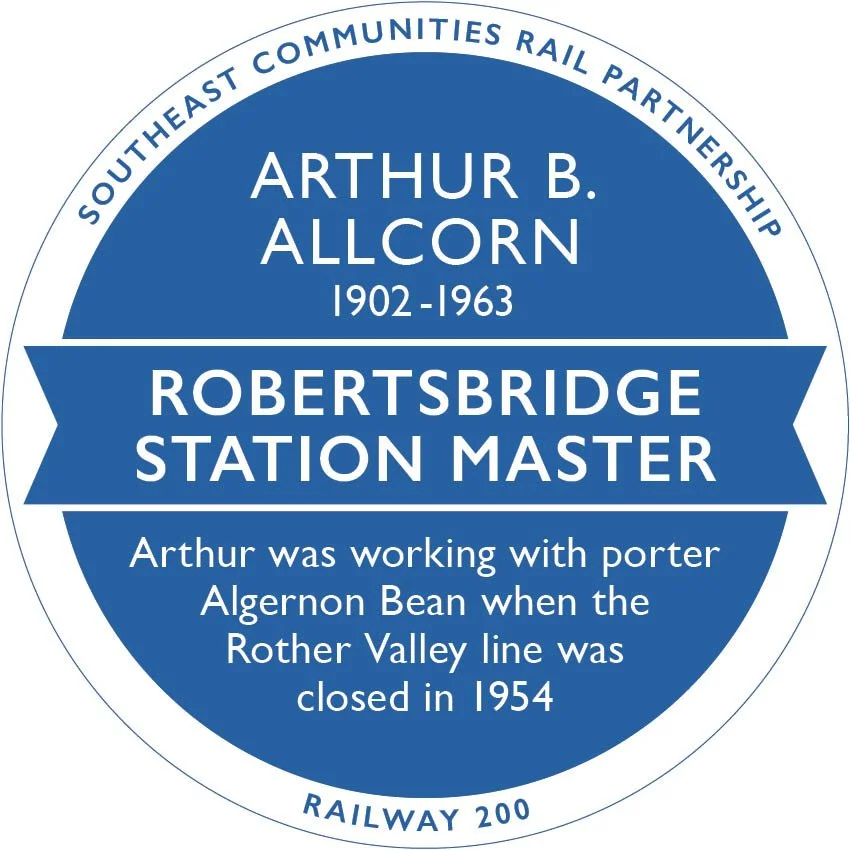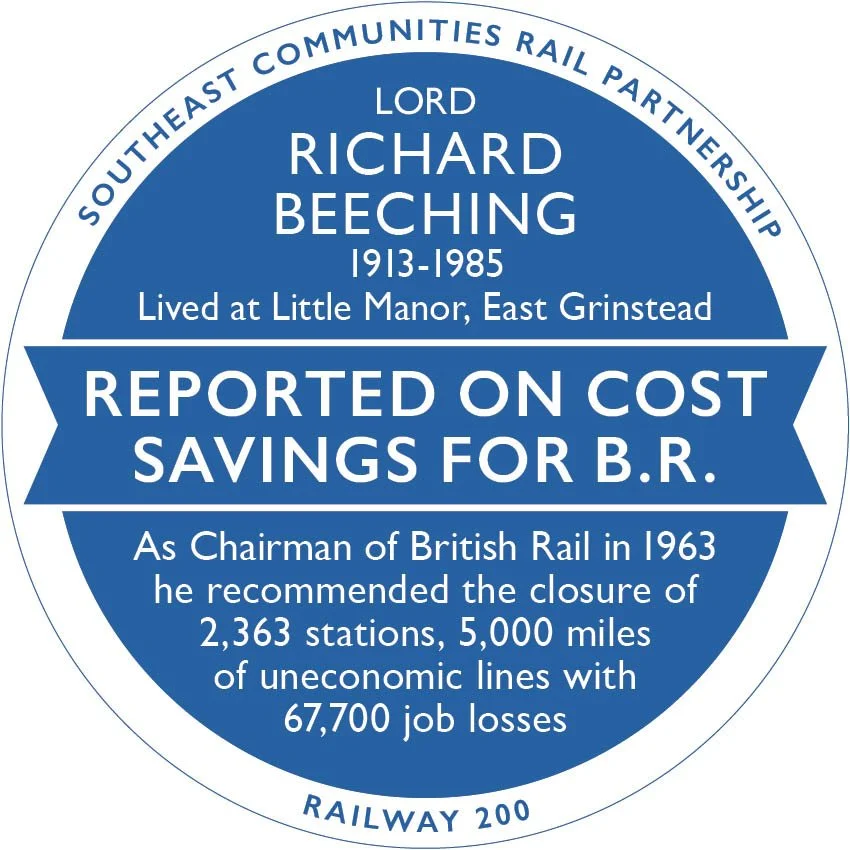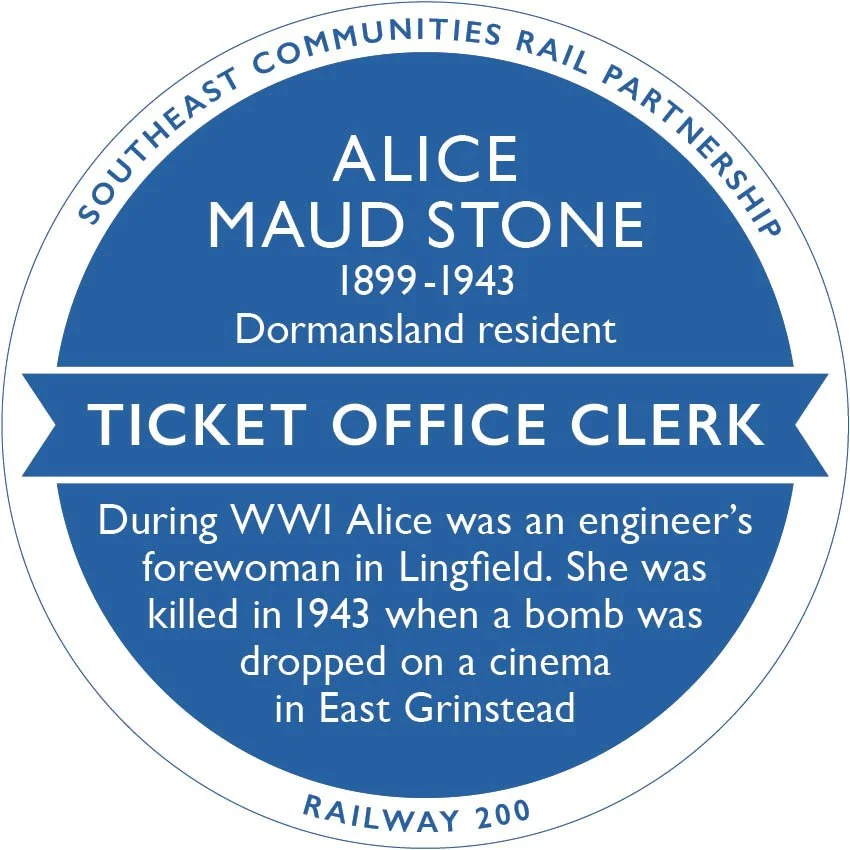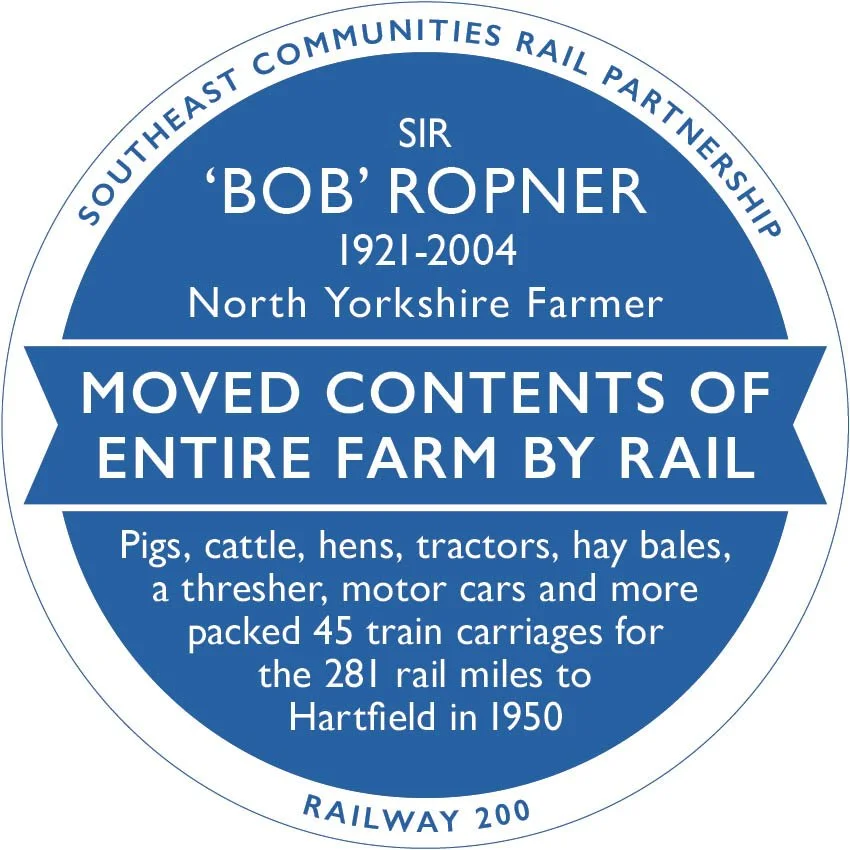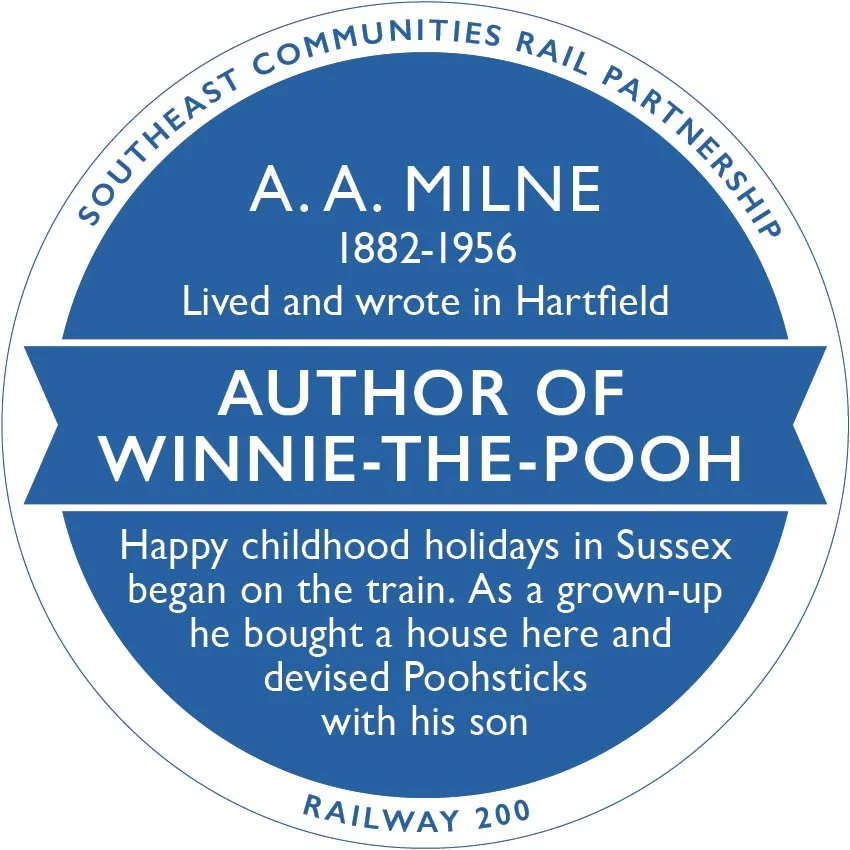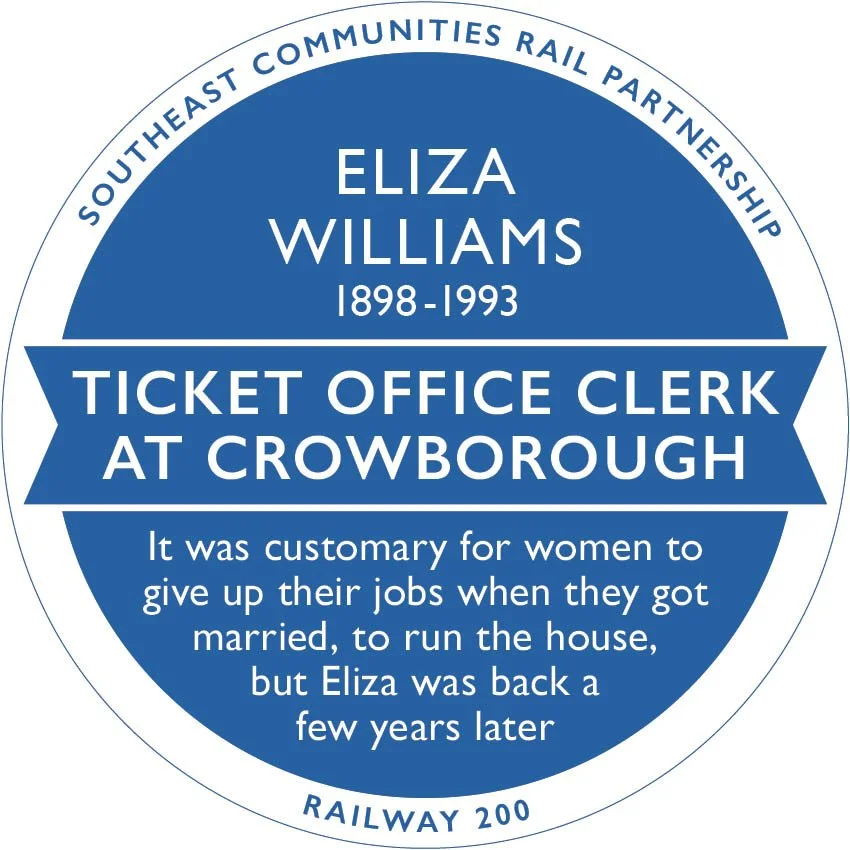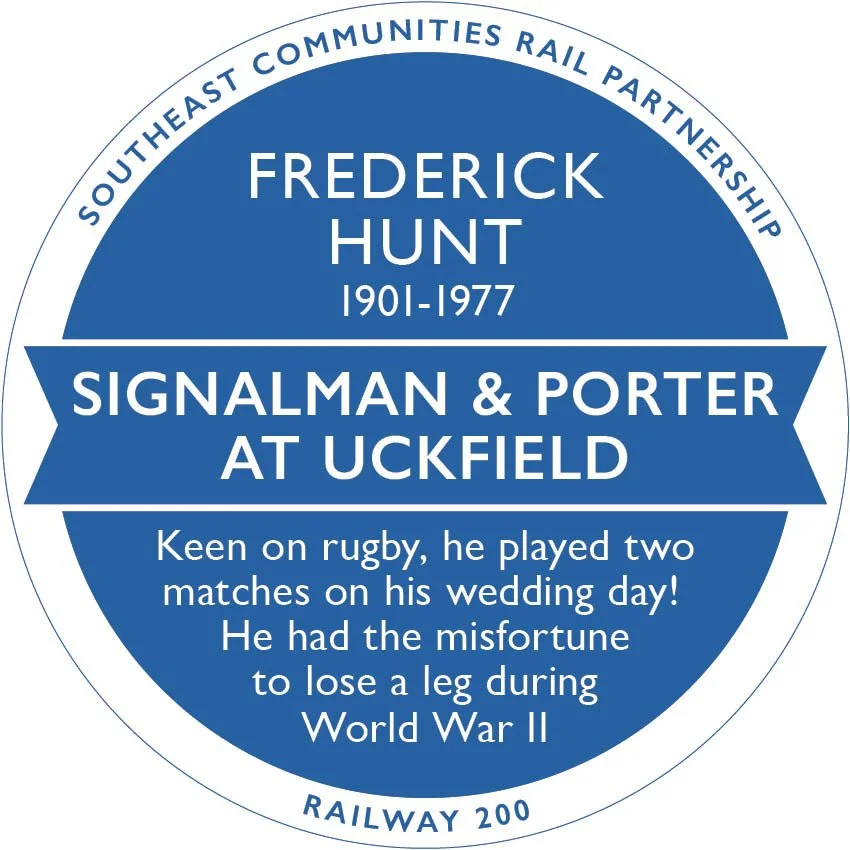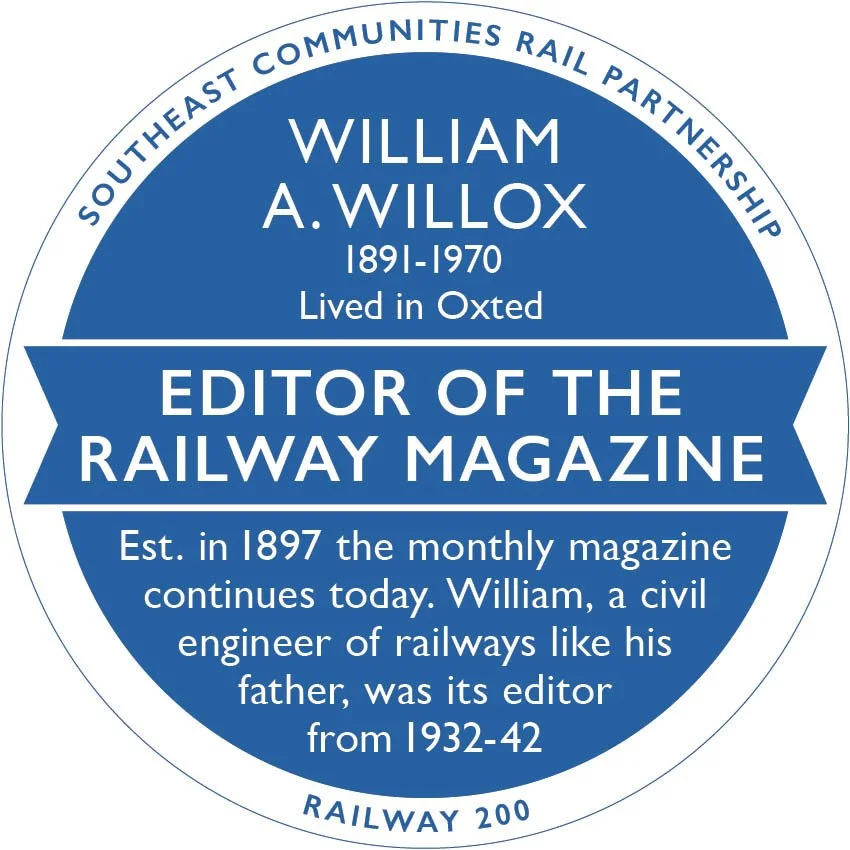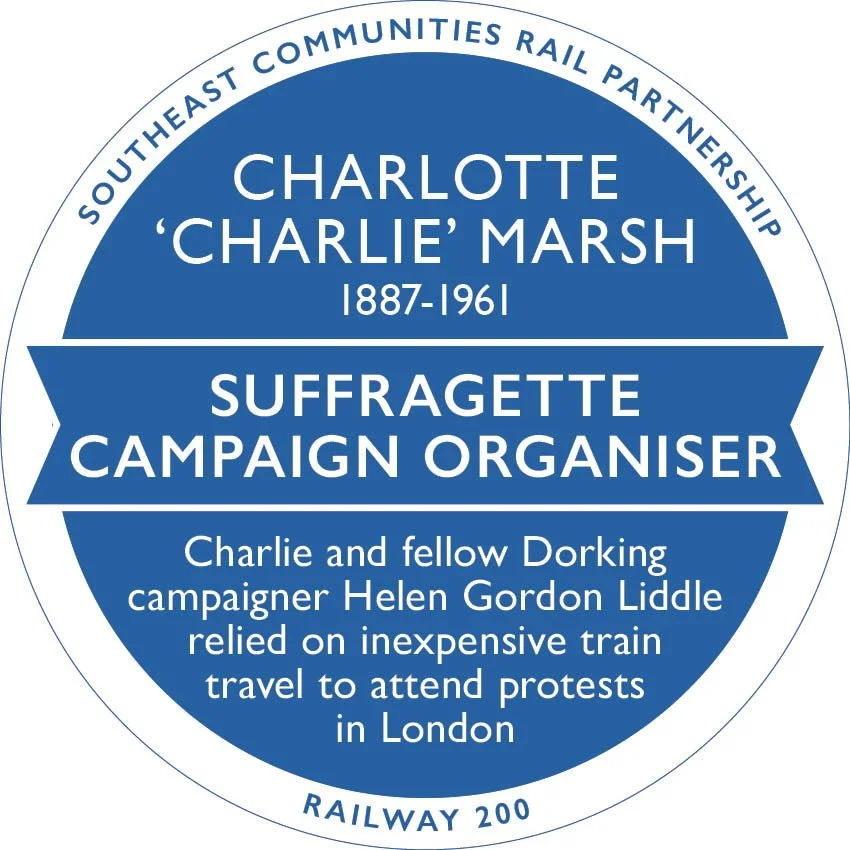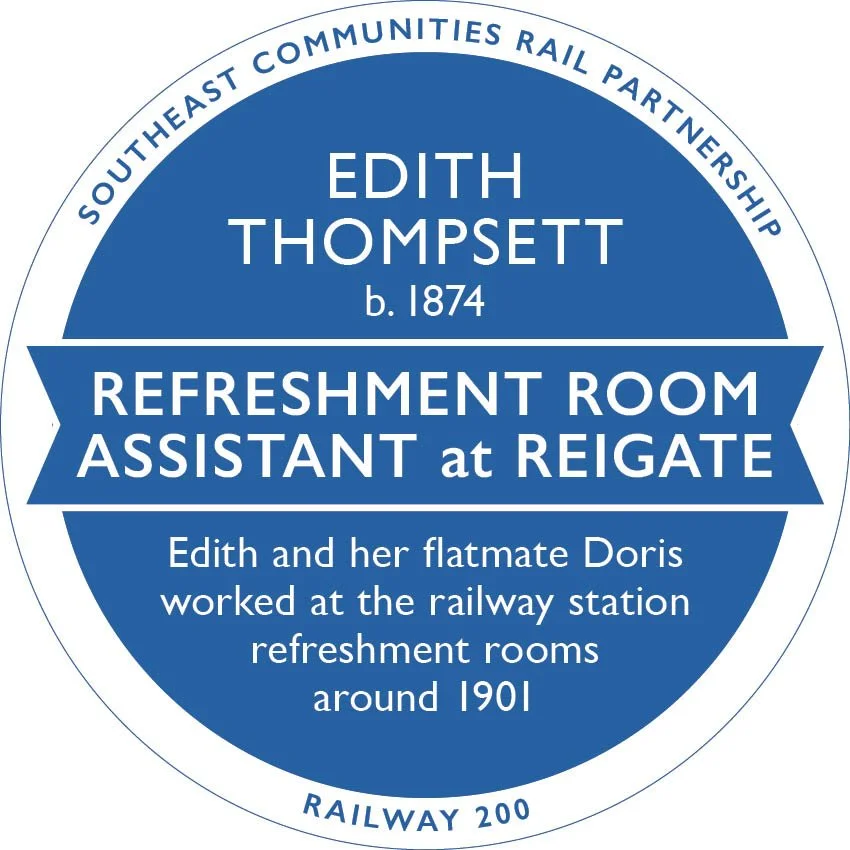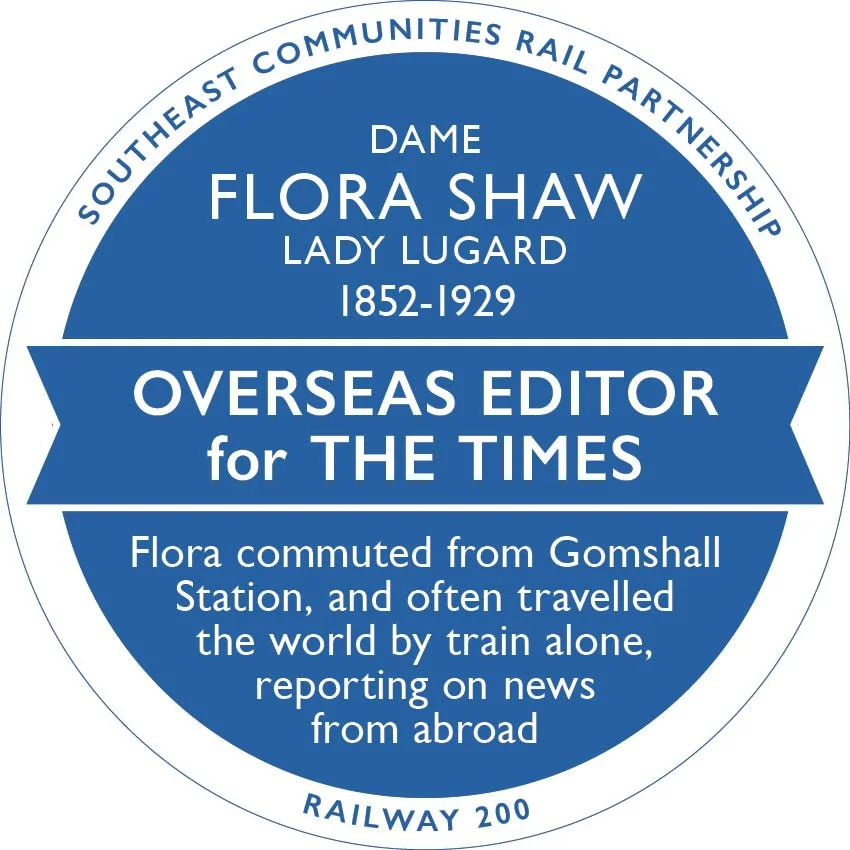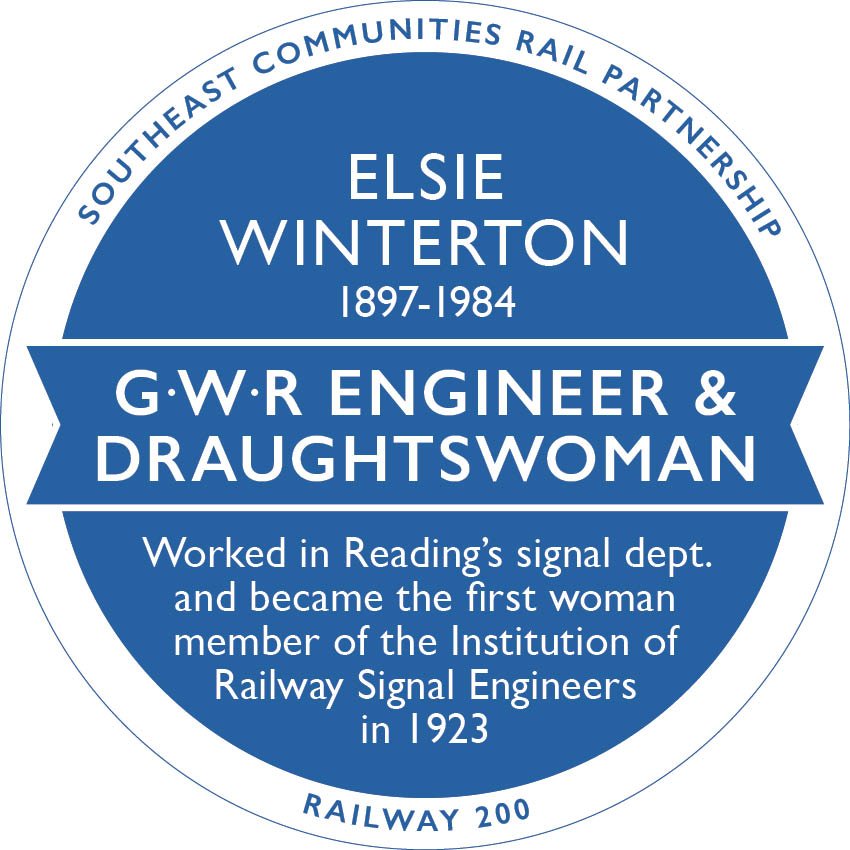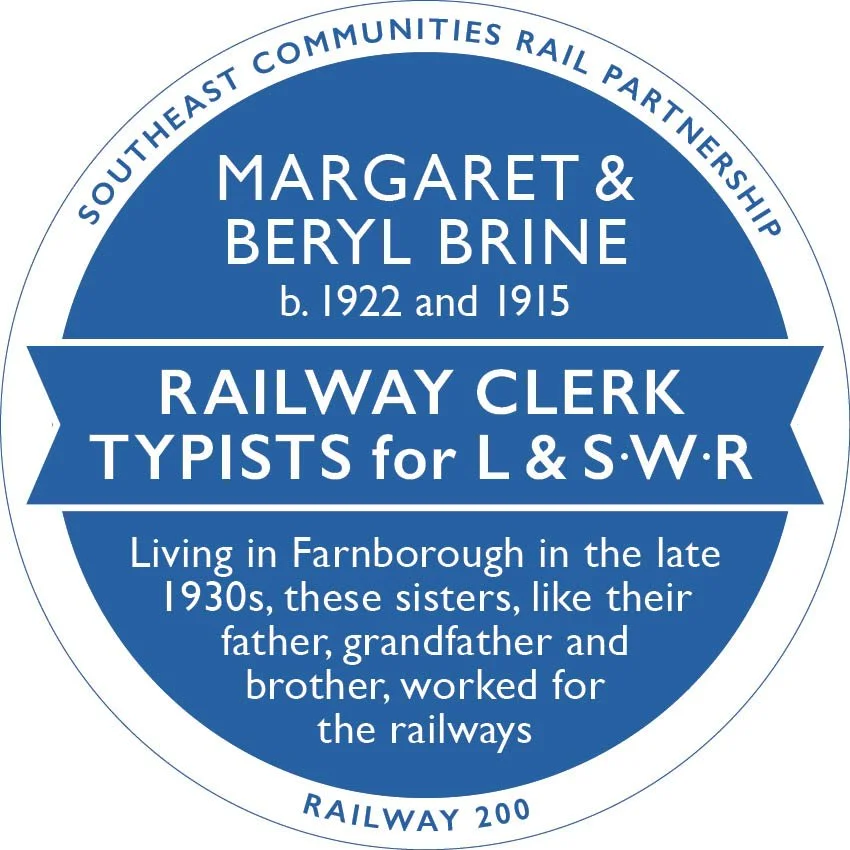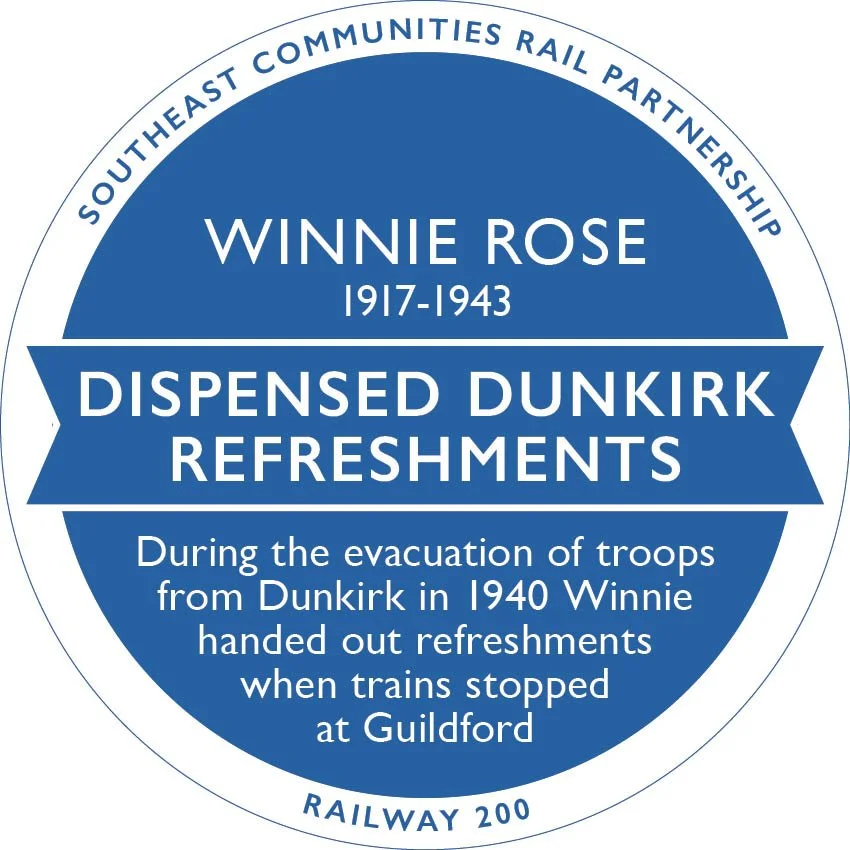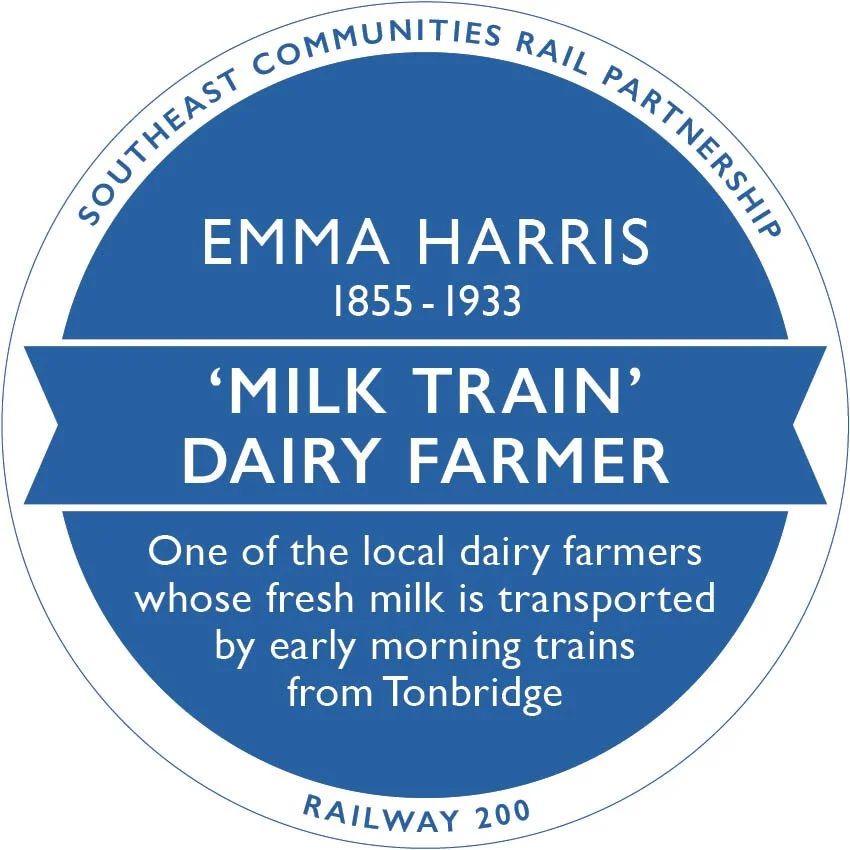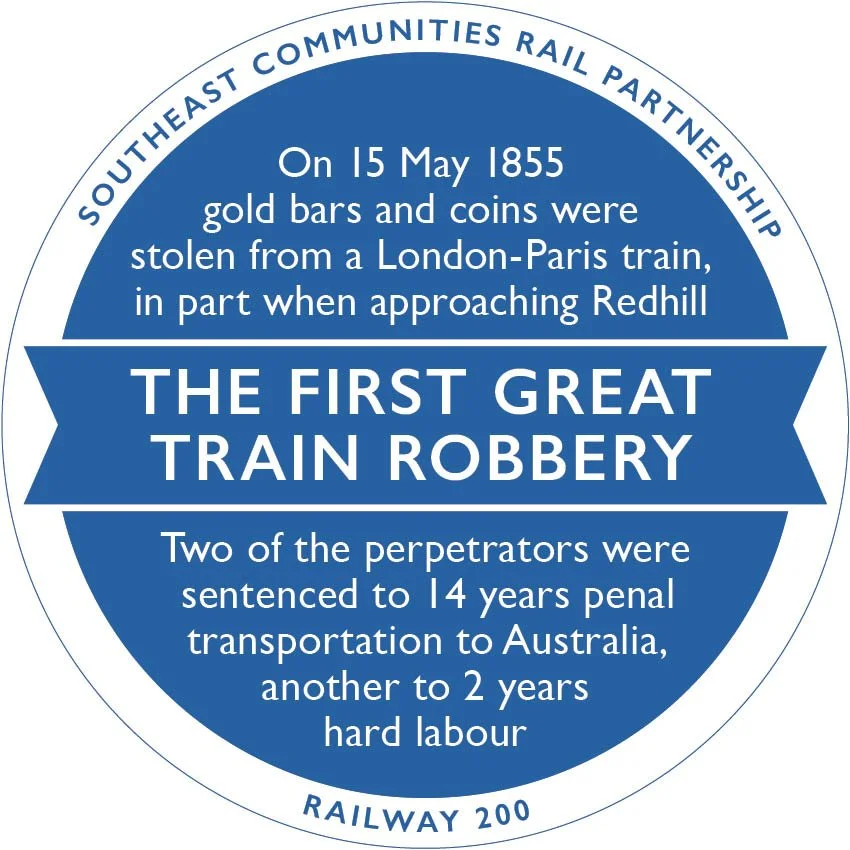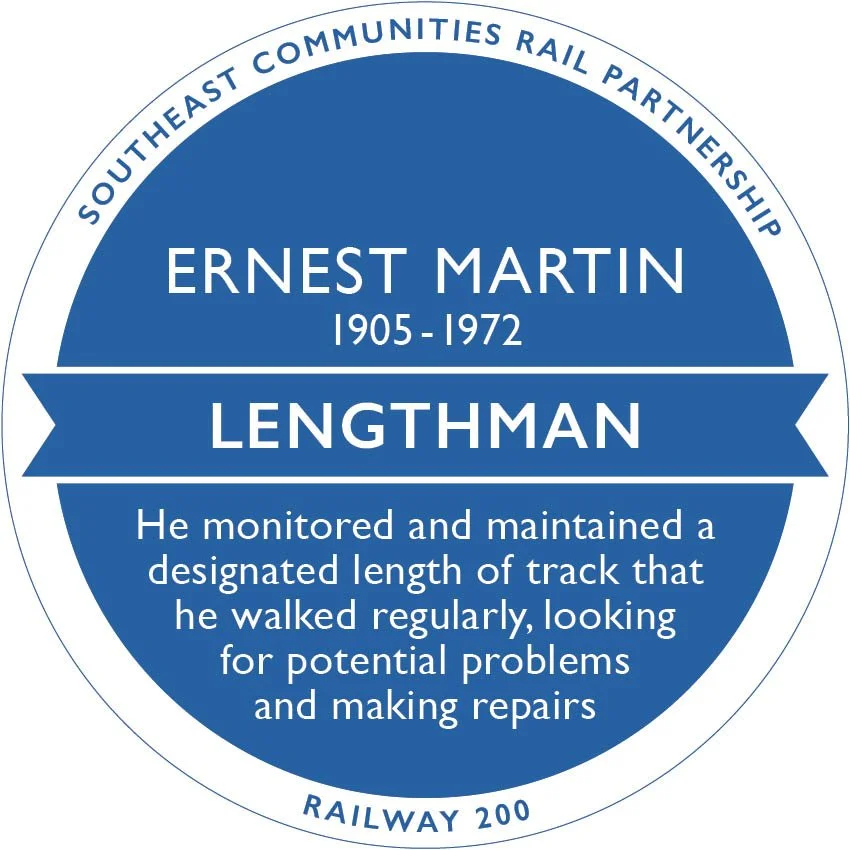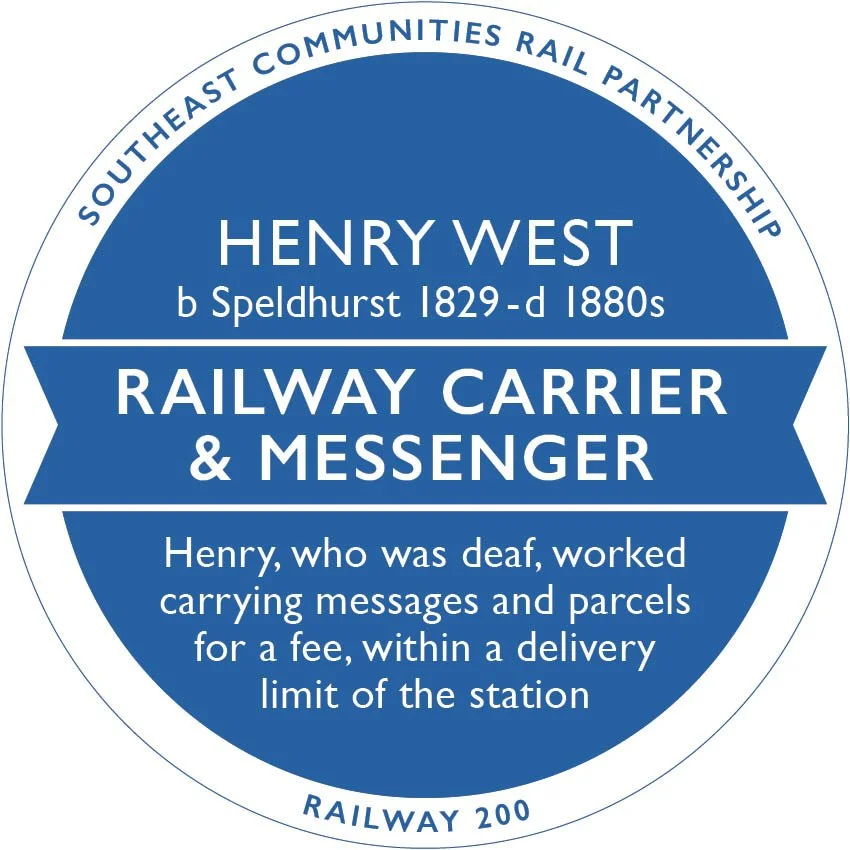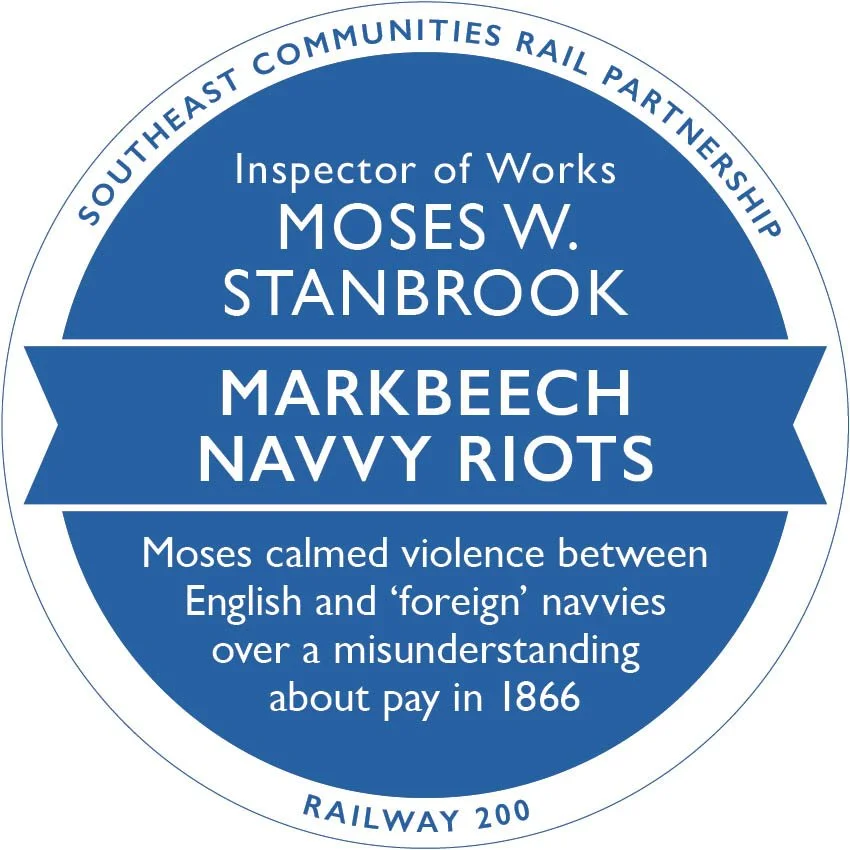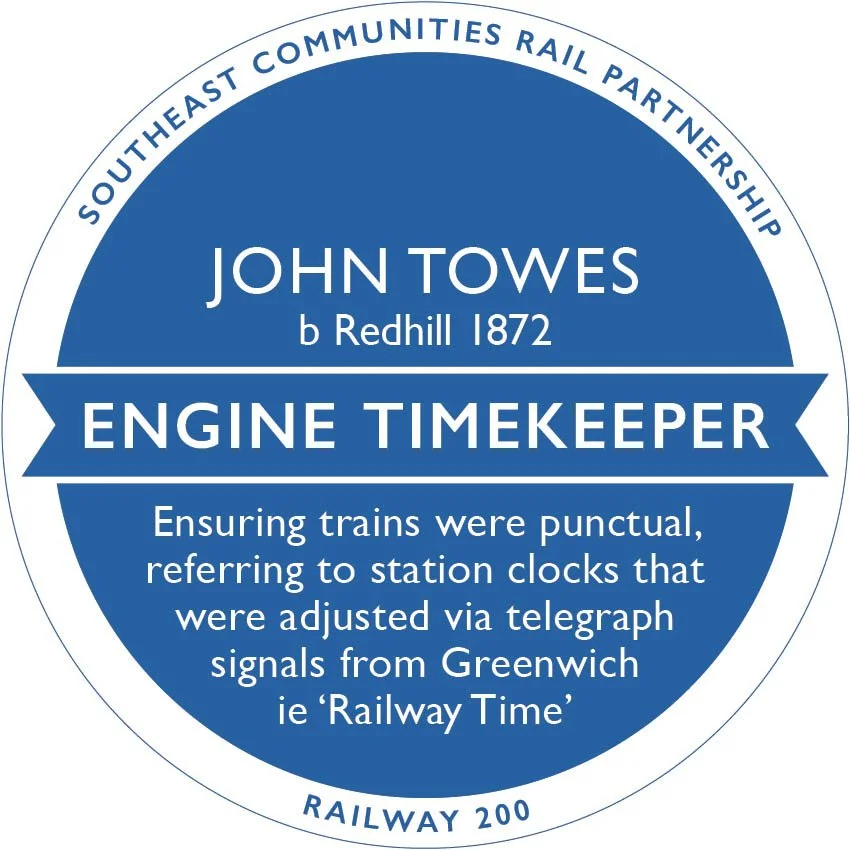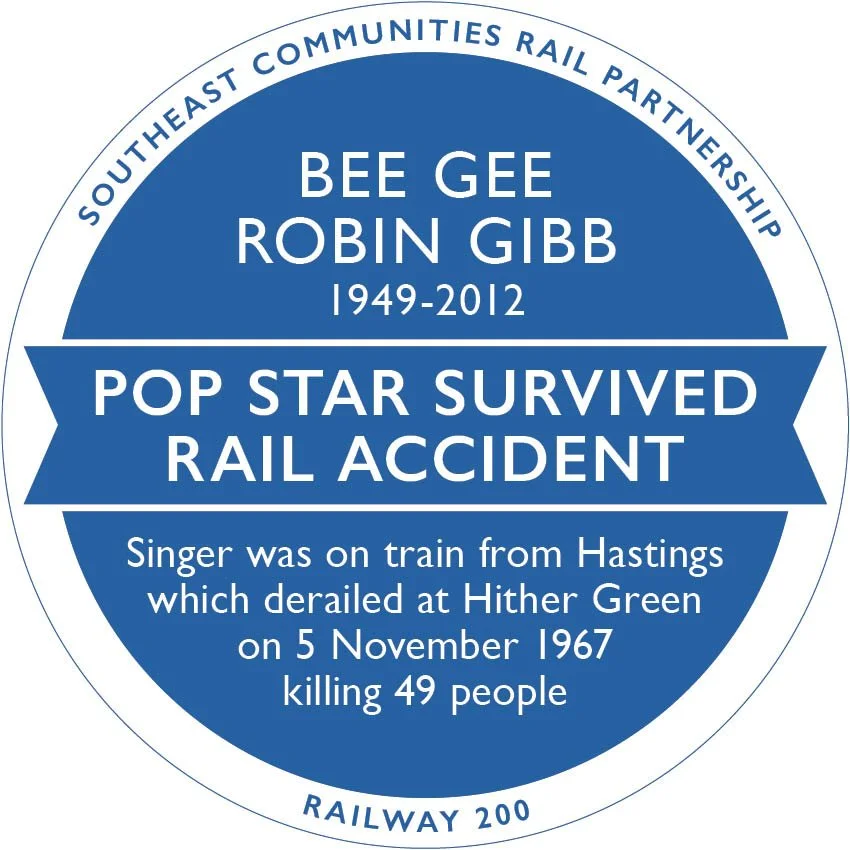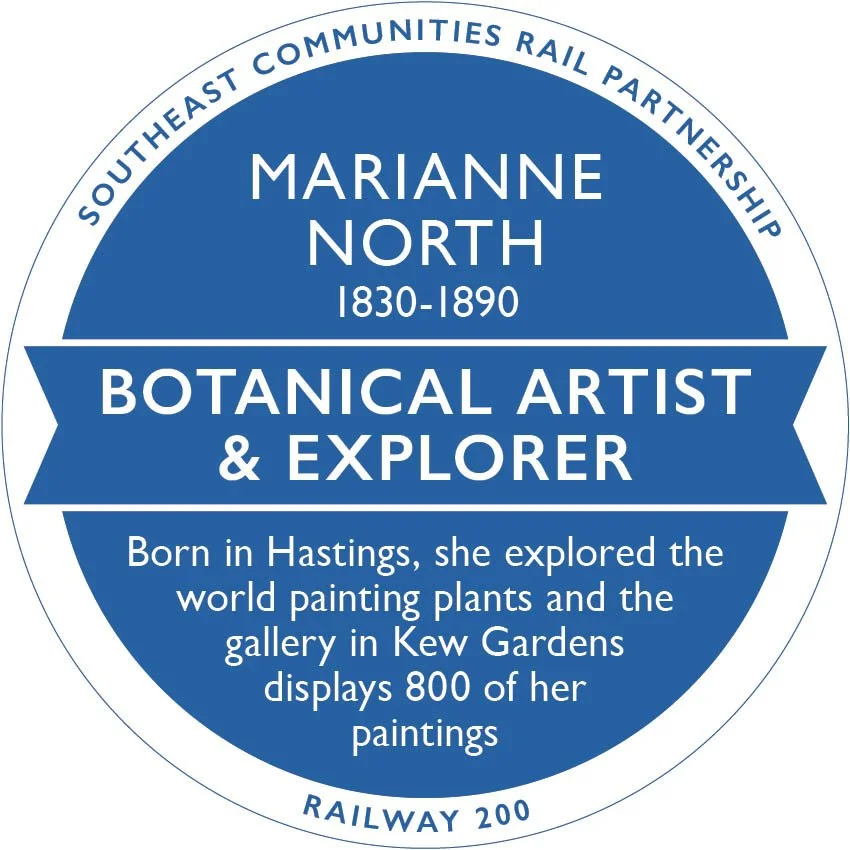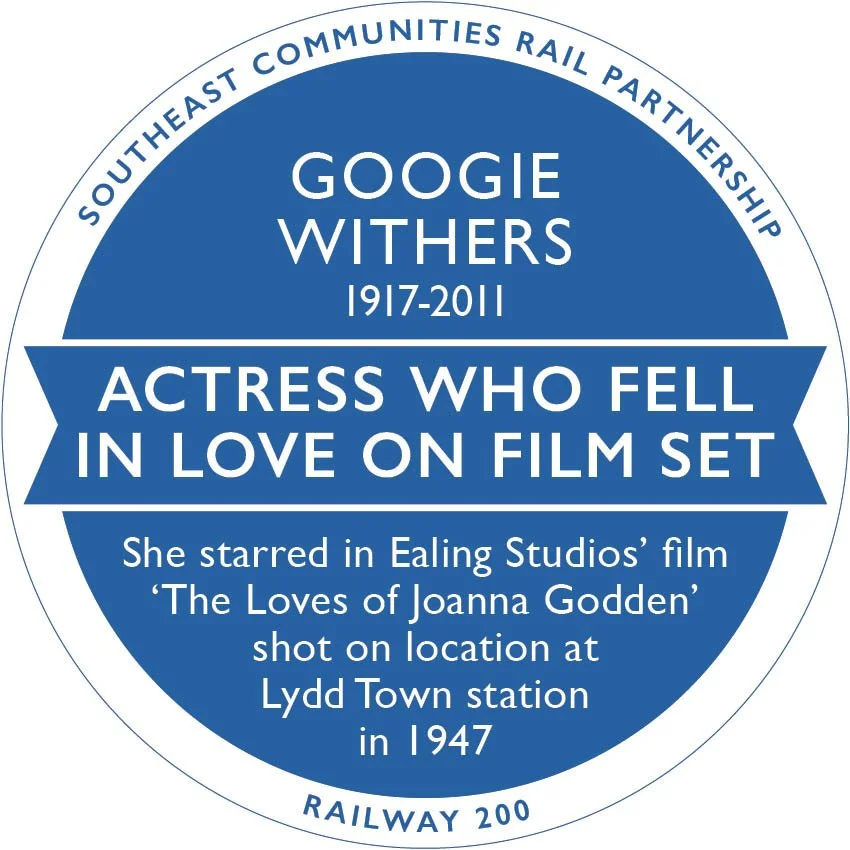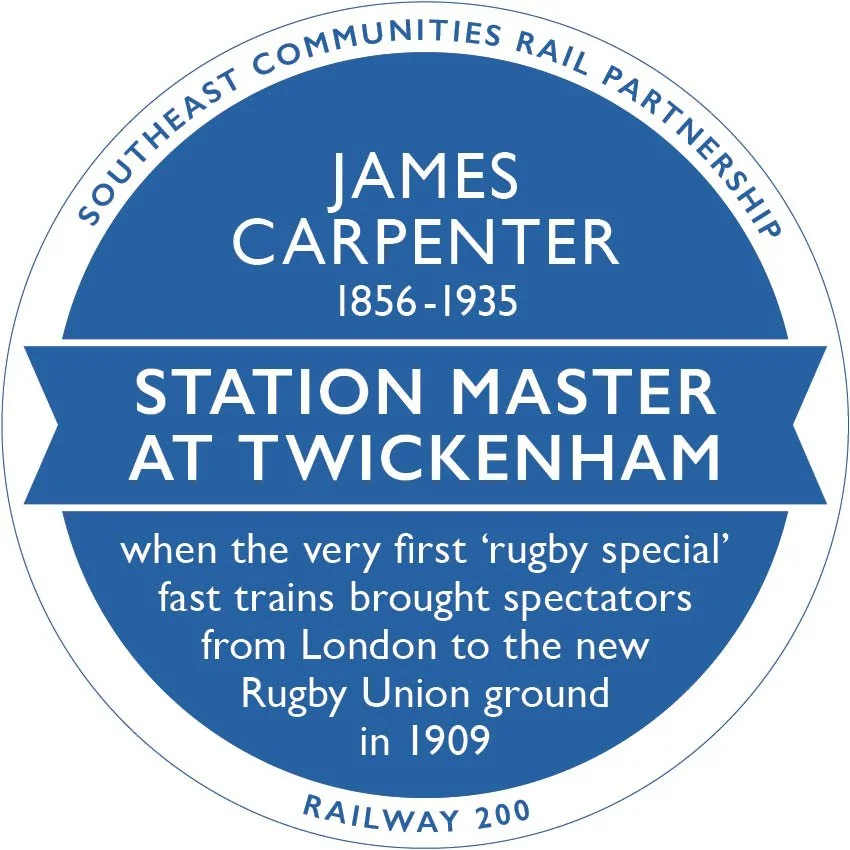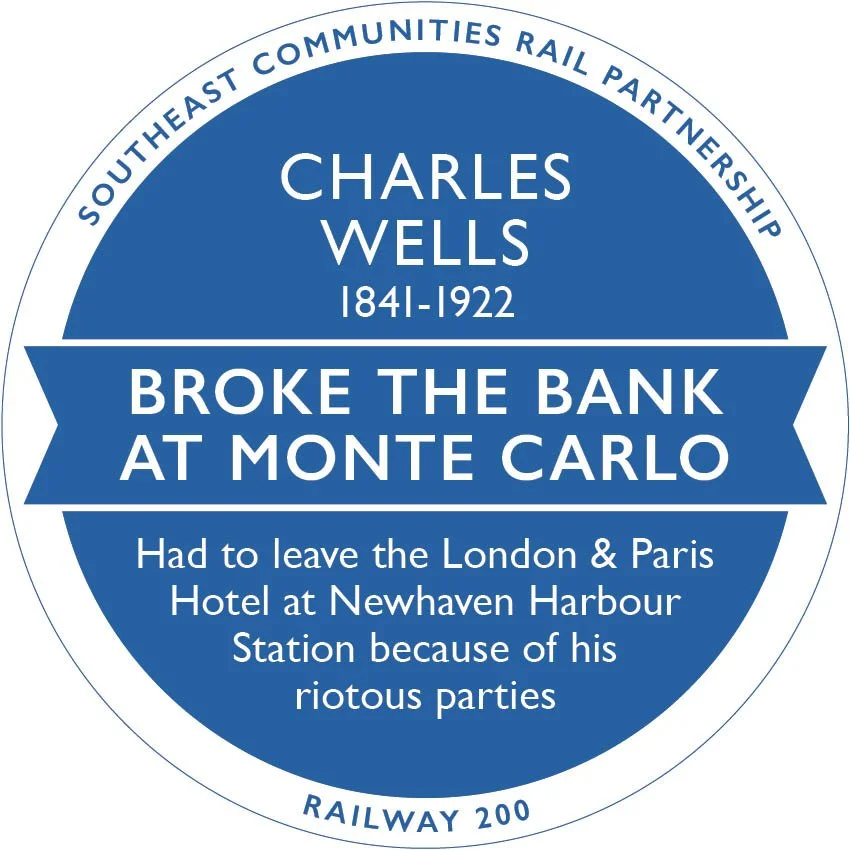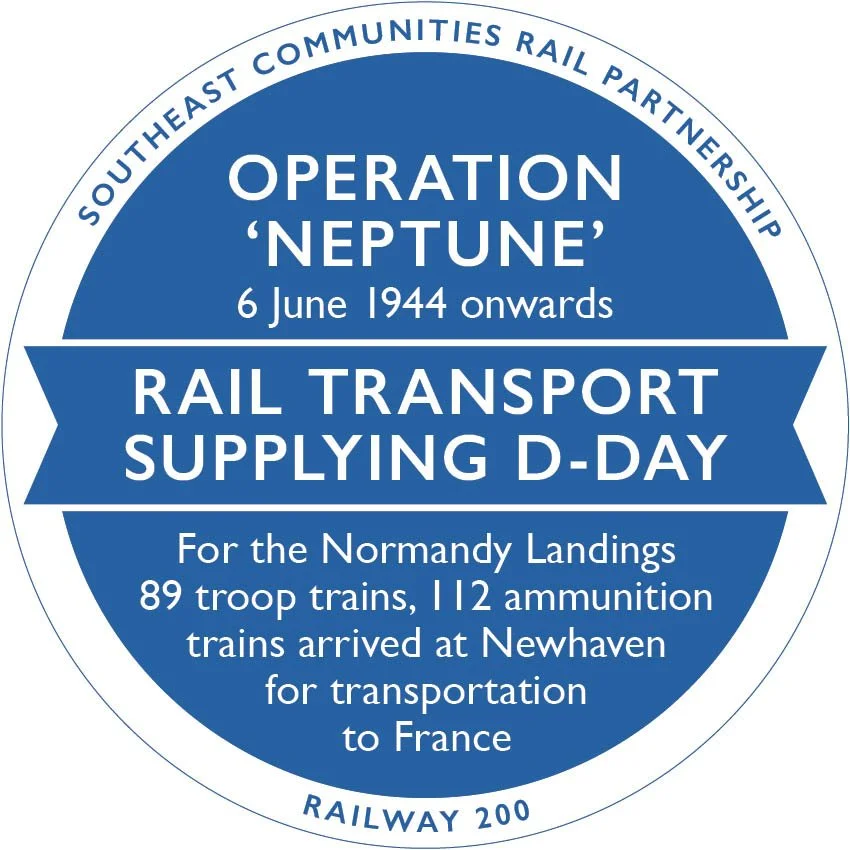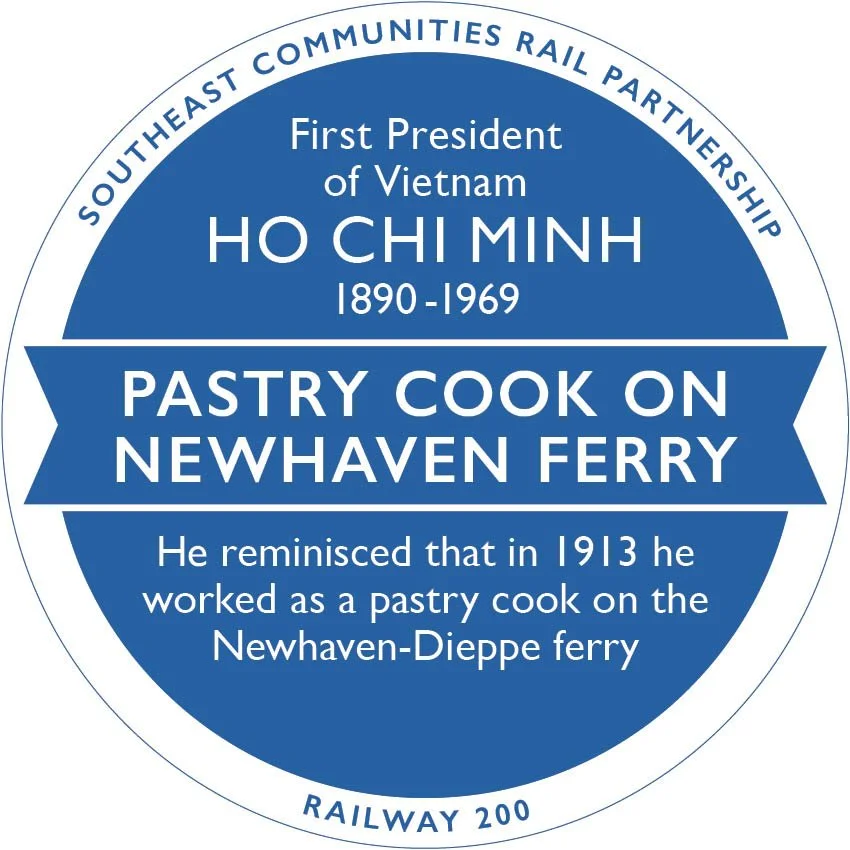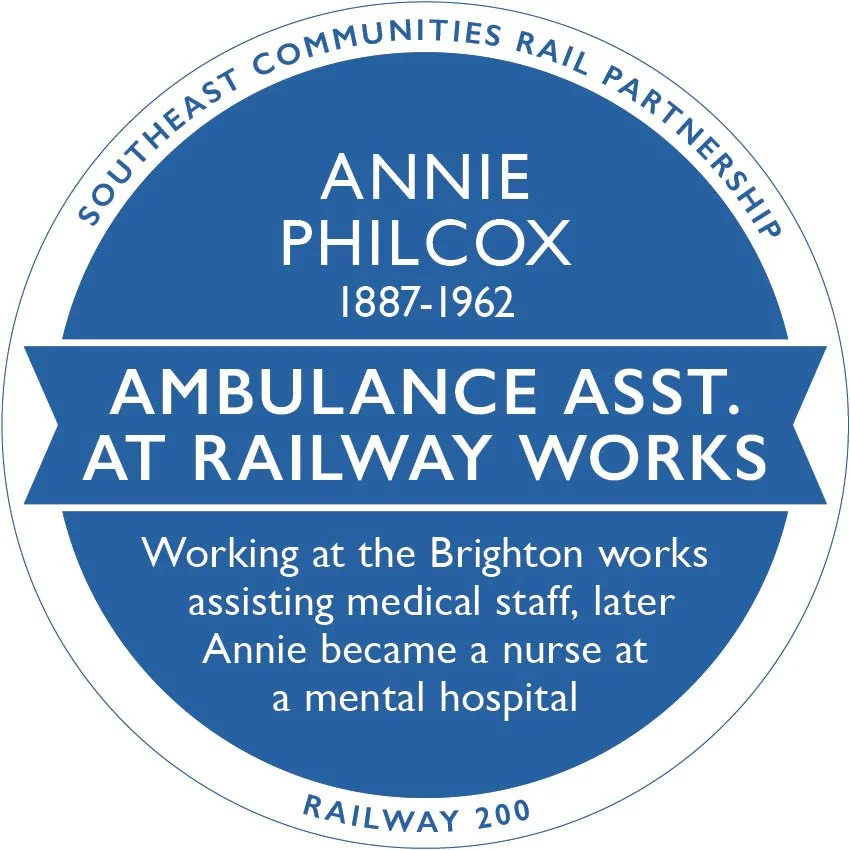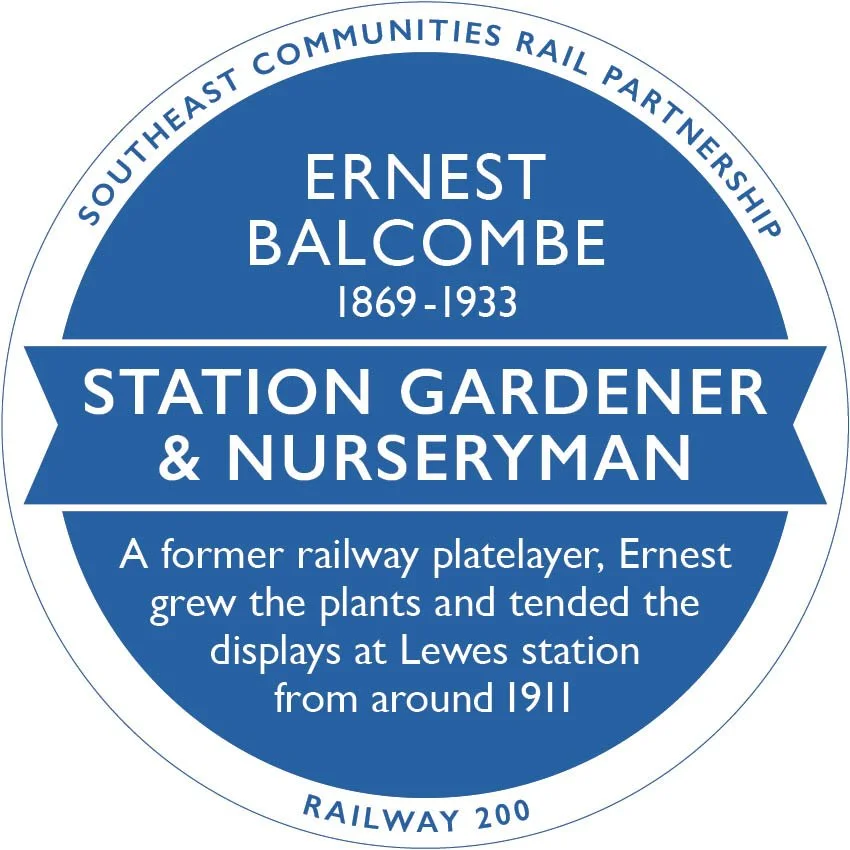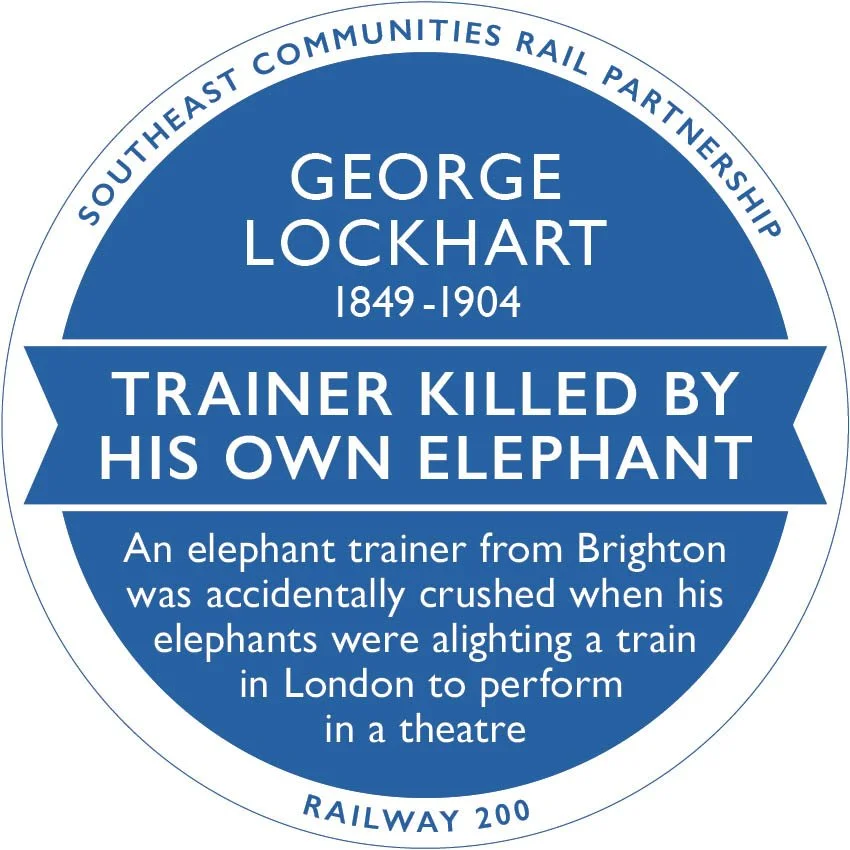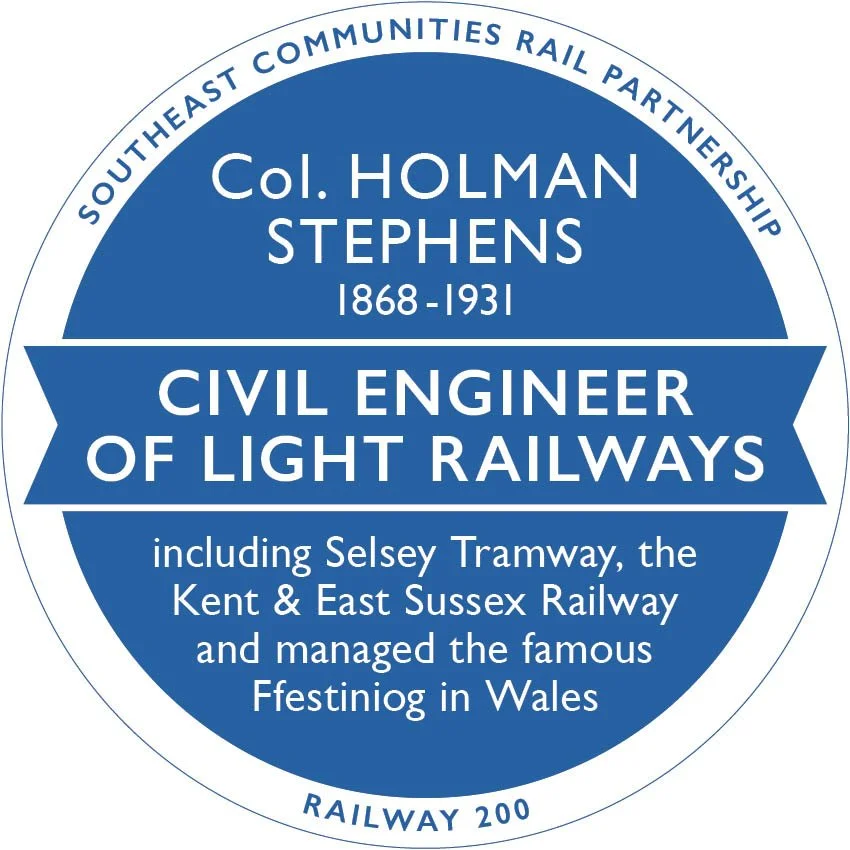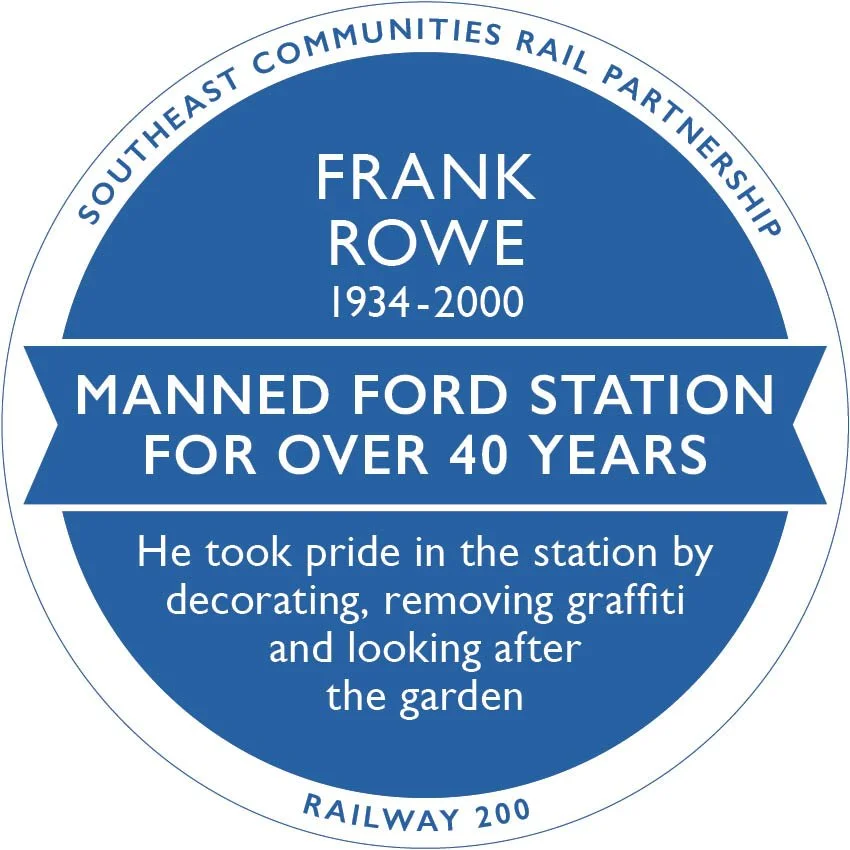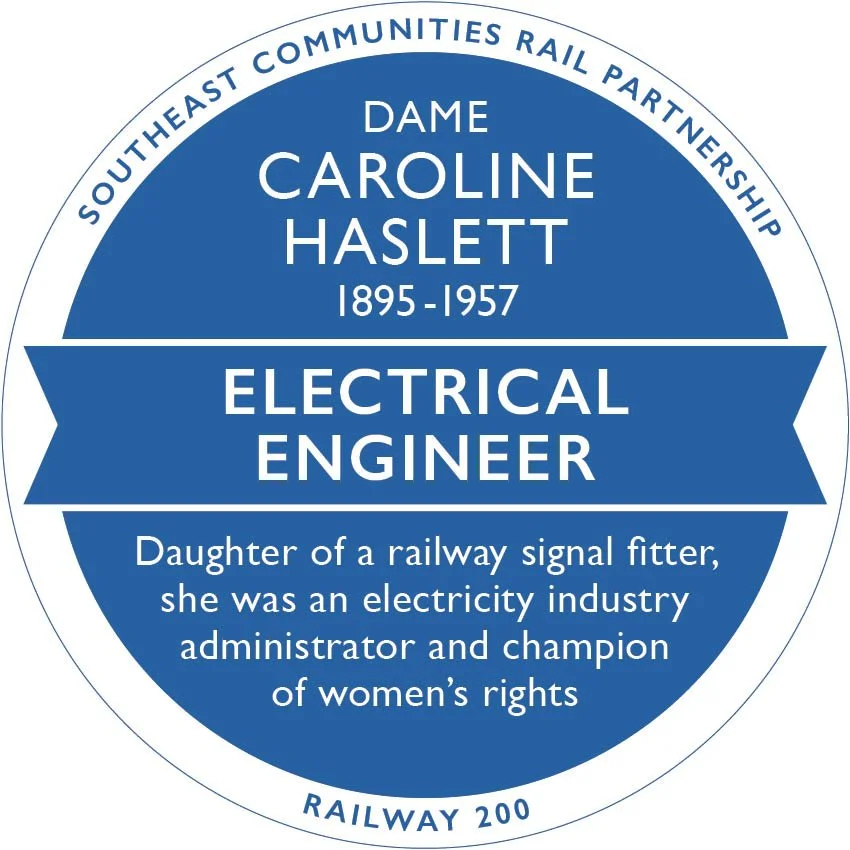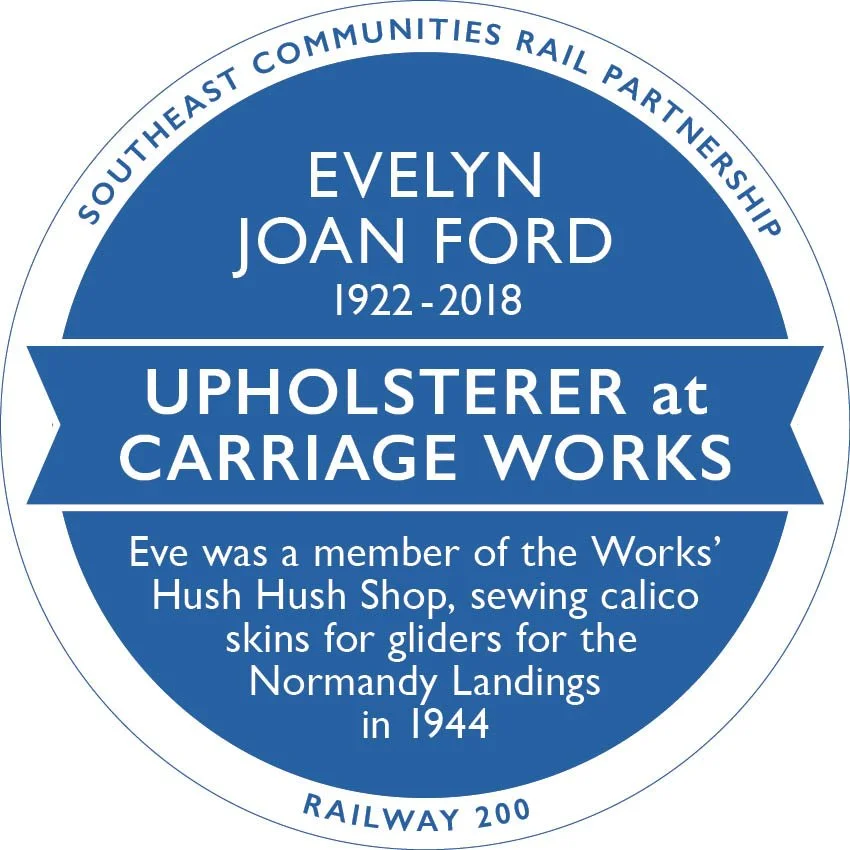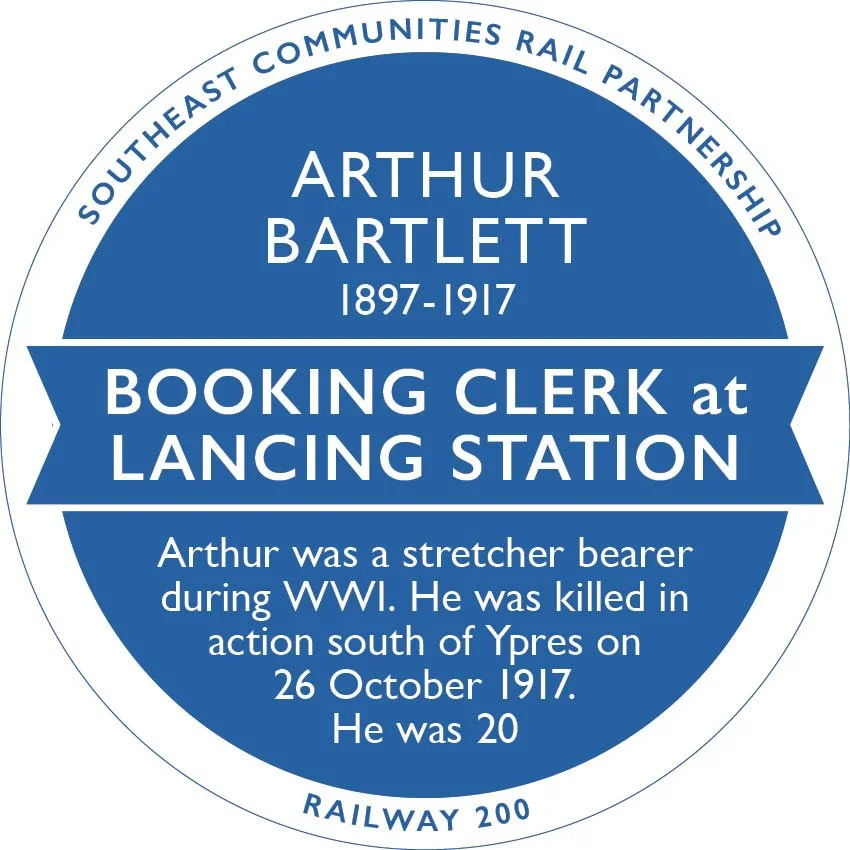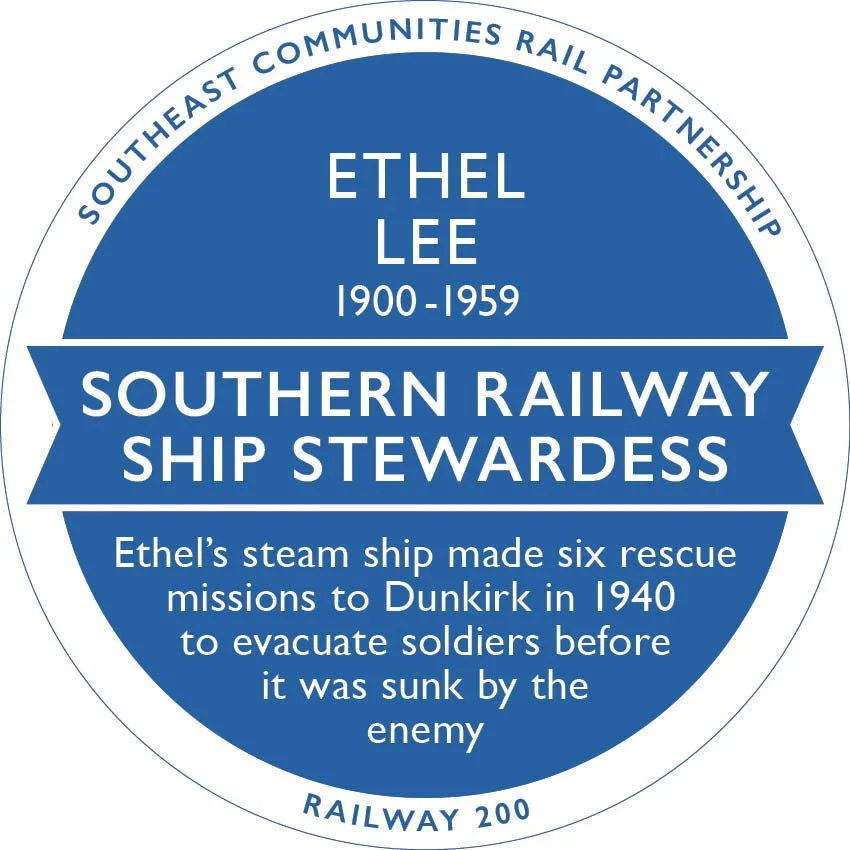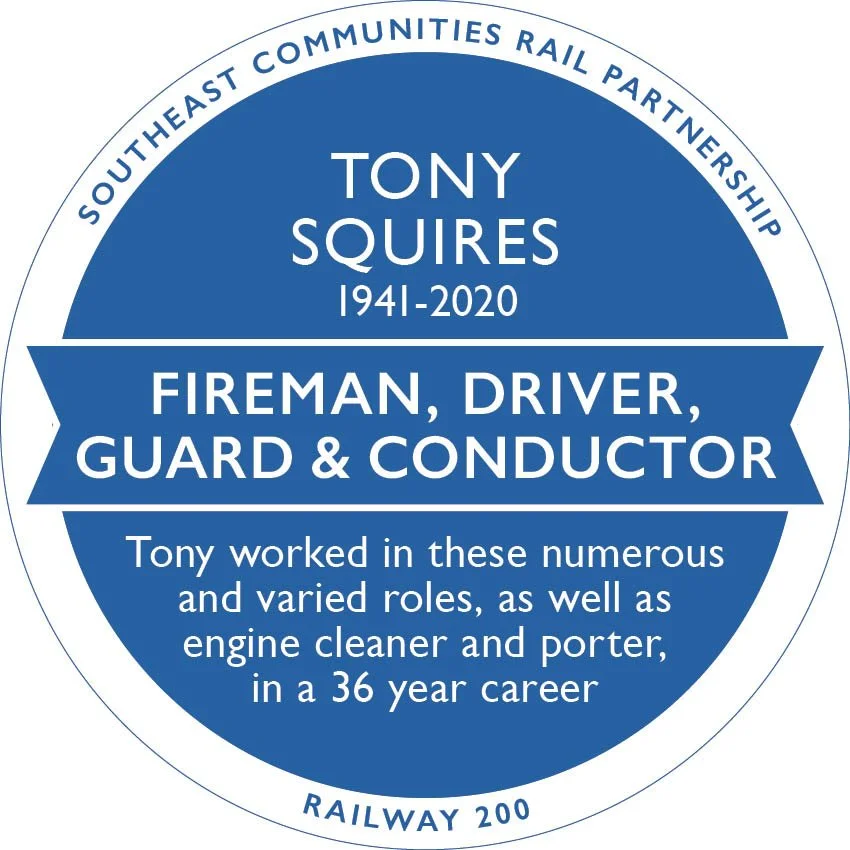RAILWAY BLUE PLAQUES: ILLUSTRATING 200 YEARS OF THE RAILWAYS
To celebrate two centuries of passenger railways accidental historian Danny Coope of Street of Blue Plaques has been commissioned by Southeast Communities Rail Partnership to create 200 plaques across the South East for RAILWAY200’s nationwide events.
DANNY’S RAILWAY200 BLUE PLAQUES ON DISPLAY AT LEWES TOWN HALL, 1 AUGUST 2025 (c) Silvertip Films
Between Danny’s own discoveries and nominations from Line managers and local history groups, a really broad spectrum of people are being remembered, through whose lives we’re able to illustrate 200 years of railway history: People who’ve either made a contribution to the building of the railways, the running of the railways, making use of the railways or having their life influenced or enhanced by the railways.
Of the 200 plaques 100 are historical, spread across ten Southeast railway lines with over 25,000 words of backstories, mostly researched and written by Danny himself. There are also 100 plaques focussing on occupations on the contemporary railway - giving an insight into how the railway industry has evolved and the sort of roles required in the 21st century. Danny says the handwriting on an 1851 census return was often easier to decipher than some of those job descriptions!
Danny occasionally exceeded the fair-use terms on the Findmypast website by clicking too efficiently through hundreds of census records and newspapers online. For a few intense hours he became an expert in milk trains, railway navvy riots, WH Smiths and King Louis Philippe of France, but was soon down another rabbit hole. It’s the most personal stories that stick with you though:
the death of 7 year old Lottie Martin at Langborough crossing that resulted in a footbridge being built
Ethel Lee the Southern Railway Ship Stewardess who spent 90 mins treading water in the Channel when her ship was bombed on the way to Dunkirk to help evacuate soldiers
George Lockhart the elephant trainer killed by his own elephant getting off a train at Walthamstow’s Hoe Street station
Frederick Hunt the porter who played two rugby matches on his wedding day and who lost a leg in WW2 and was re-employed by the railway when he came back from the war with a disability
-
George Gibbins joined the Army Medical Corps and was posted to Palestine in the 1921 but went missing and was presumed dead but was OK and came home to retrain as an ‘electric track lineman’
Agatha Christie used trains a lot in her writing - in ‘The ABC Murders’ each victim has an ABC Railway Timetable left by the body; in ‘4.50 From Paddington’ a train passenger witnesses a murder in a slowly passing train; and in urder on the Orient Express’ a murder occurs on a glamorous, snowbound train
Helena Wojtczak, British Rail’s first female guard at 19 - those in recruitment hoping a medical exam and tough training courses would weed her out as an inadequate candidate but she passed them all.
The assassination attempt on Queen Victoria at Windsor Station in 1882 was by a man who’d been sectioned by his own family for homicidal tendencies but had been released form the asylum. He was found not guilty on grounds of insanity. Her Majesty wrote ‘It is worth being shot at, to see how much one is loved.’
Brunel’s father was a Frenchman who’d fled the Revolution for the USA and had become NewYork City’s Chief Engineer. Back in England his son Isambard helped him on building a tunnel under the Thames. Isambard was injured and spent his recuperation time on designs for the Clifton Suspension Bridge
electrical engineer Caroline Haslett, at a Suffragette dinner found herself sitting next to Emmeline Pankhurst, who upon hearing that Caroline hoped to become a fully qualified engineer, said “But surely that’s a very unsuitable occupation for a lady, isn’t it?” Caroline put Mrs Pankhurst in her place, telling her that doing a job in the right way was more important than whether it was done by a man or a woman
Ernest Wills was the branch manager of WH Smith’s bookstall at Edenbridge Station in 1930s.The very first Smiths opened in Euston in 1848, and were the first to use the railway to quickly distribute London- based daily newspapers nationwide
Col. Holman Stephens - light railway civil engineer - was 6’2” by the age of 15 and remained a bachelor all his life.When he died in 1931 his estate, worth about £1.4m in today’s money, was divided between four colleagues at Tonbridge station
John Pelham Maitland - in charge of sheds at Bognor - was the son of a whisky distiller, who organised staff outings to Europe, spoke 7 languages fluently
Trevor Tupper, of the Rail Users’ Assoc. - in 1967 he may have set a record for the most rail miles covered in two weeks when he travelled 11,483 miles by train in 280 hours! And set up privately run rail excursions to Torquay and Scotland for example, with proceeds going to charity
Suffragette Charlotte Marsh, who’d been imprisoned for throwing roof tiles onto the car of the Prime Minister Anthony Asquith, was employed by the next Prime Minister as chauffeur and mechanic!
Times newspaper columnist Dame Flora Shaw, in the 1890s was the highest paid female journalist. On a train in Australia, she said her dress caught fire in the blistering heat and was only put out by her male companion grabbing the outer layer of her dress in his hands to extinguish it
The Railway servants Orphanage in Woking, was built on land purchased from the London Necropolis Company, who had their own special funeral train services from Waterloo.
If Danny has one regret “I would’ve loved to have connected with one of the many babies born on a train in the last 200 years” but sadly that didn’t work out. If anyone hear’s anything though DO let him know!
Let’s finish with a quote from Winnie-the-Pooh writer A.A.Milne who lived on the Uckfield line:
“I stand at the door of my carriage feeling very happy. It is good to get out of London. I have nothing to read, but then I want to think. It is the ideal place in which to think, a railway carriage; the ideal place in which to be happy.”
1066 LINE
UCKFIELD, EAST GRINSTEAD & OXTED LINE
NORTH DOWNS LINE
TONBRIDGE TO REIGATE LINE
MARSHLINK LINE
HOUNSLOW TO RICHMOND LINE
SUSSEX DOWNS LINE
ARUN VALLEY LINE
SUSSEX COAST LINE
-
If you’re unfamiliar with Danny’s plaques: where English Heritage’s ceramic blue plaques, as you know, celebrate famous, creative or otherwise successful people. Danny has been creating blue plaques for real, ordinary people like you and me - particularly for people that lived over 100, 150 years ago. What might’ve seemed like ordinary jobs at the time, can remind us today of how life, fashion and technology was often so much different then. Jobs such as ostrich feather curler (for those Victorian hats!) or ivory carvers, tallow melters, even cinema usherettes are jobs of the past.
For Railway 200 the plaque design has a vintage, railway feel, sharing the typeface on mid-century railway signs, posters and leaflets; and the fishtail shape of the enamel cap badge worn by uniformed railway staff in the 1950s and 60s, that displayed each employee’s role to the public.


